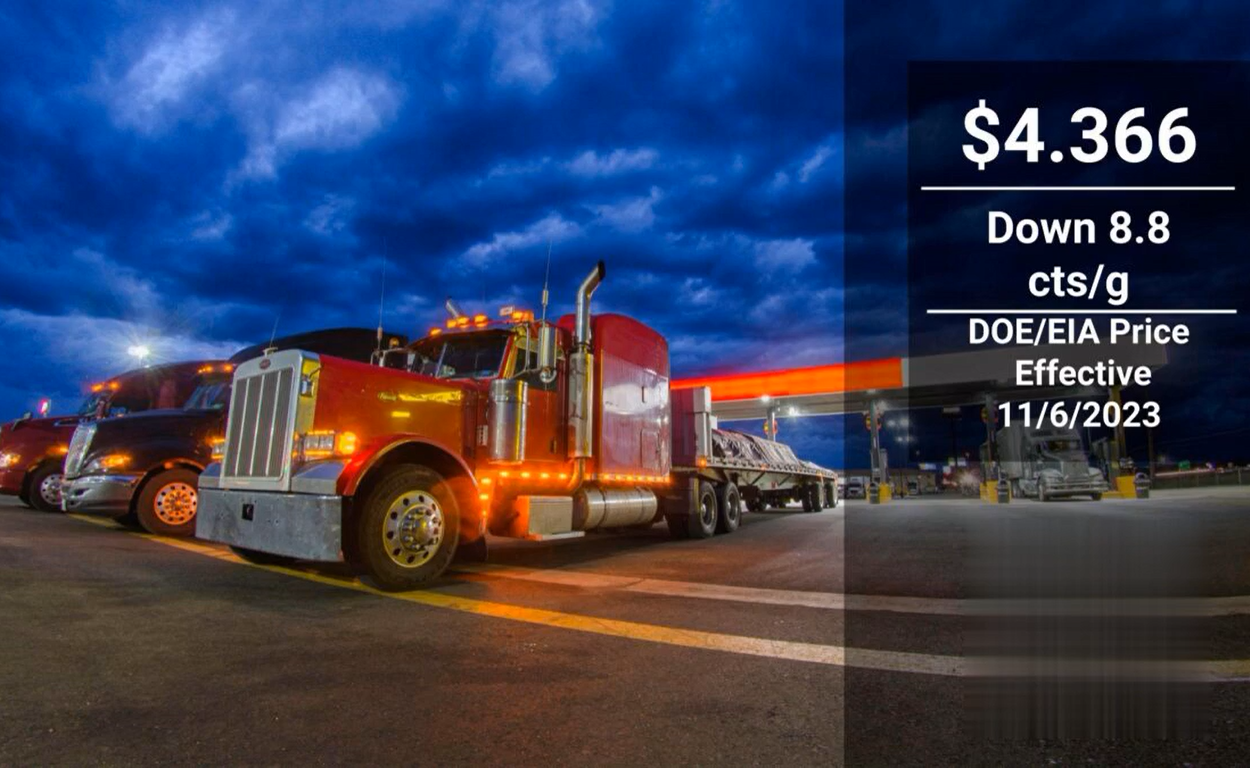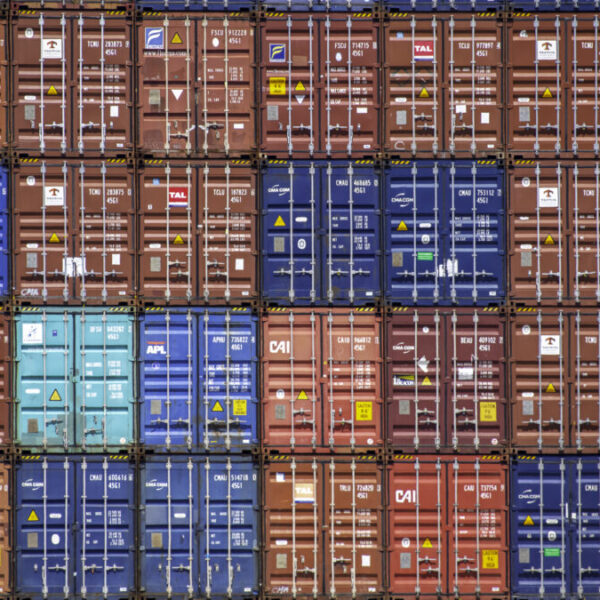The average price that consumers pay for diesel at the pump has fallen for 4 out of the last 5 weeks, continuing a downward trend that is aligning retail prices with a significant drop in futures prices from mid-October.
According to the latest data from the Department of Energy, the national average retail price for diesel is now $4.366 per gallon, an 8.8 cent decrease from last week. Overall, the benchmark retail price has declined by 22.7 cents since early October. While prices ticked up briefly in late October, the net result for the past 5 weeks has been a steady drop in what consumers pay at the pump.
These retail price declines are lagging but catching up to much steeper drops of over 30 cents per gallon on diesel futures contracts during a two-week stretch in October. Diesel futures on the CME commodity exchange had climbed to over $3.21 on October 13 before sliding below the $3 mark on October 30.
Futures Show Signs of Bottoming Out
In the past week and a half since futures dipped below $3 per gallon, prices have hovered right around that level, trading both slightly above and below it on different days. This indicates the market may be bottoming out after a significant slide and has entered a period of relative stability.
The leveling off is also evident in the narrowing gap between current future prices and long-term contract prices. This pricing curve shows how much future delivery contracts cost compared to near-term contracts. A wide gap generally signals tight inventory levels and supply concerns, while a narrow curve suggests less worry about near-term shortages.
The 12-month curve for diesel futures has compressed considerably since mid-October as worries about global supply disruptions have eased. This flattening curve reflects market expectations that inventory levels could rebound somewhat in the coming months.
Supply Levels Remain Tight But Could Improve
Current diesel inventory data continues to show tight supply levels. As of late October, the days of supply in diesel inventories was 28 days, among the lowest levels in 2022. But this supply cushion measurement has stabilized over the past couple of weeks rather than continuing to decline.
With the fall refinery maintenance season coming to an end soon, there are expectations that refinery utilization rates could start to increase and boost production levels. This could help build diesel inventories back up as we head into winter heating season demand.
The refinery usage rate was averaging around 85% in late October as maintenance work wound down. If more refinery capacity comes back online in November, that could take some additional pressure off diesel prices.
Key Drivers Behind the Recent Price Rollercoaster
Several factors drove the spike in diesel prices in September and early October followed by the steep decline since then.
On the upside, prices were pushed up by:
- EU sanctions on Russian oil products are slated to begin in February
- Lower diesel exports from China
- Overall concerns about global oil supply amid the Russia-Ukraine conflict
Downward pressure comes from:
- Fears of a global economic slowdown are reducing oil demand
- A stronger US dollar makes oil purchases less expensive globally
- Easing of geopolitical tensions as the Israel-Hamas conflict avoided impacting oil infrastructure
As we head into the winter months, diesel prices remain murky. Much will depend on global crude production levels, economic growth, the weather, and consumer demand. But the recent leveling of futures prices suggests the period of major volatility may be calming down as markets search for equilibrium.
By leveraging their expertise and resources, Lading Logistics aims to provide efficient and reliable international shipping and logistics solutions for their clients.



